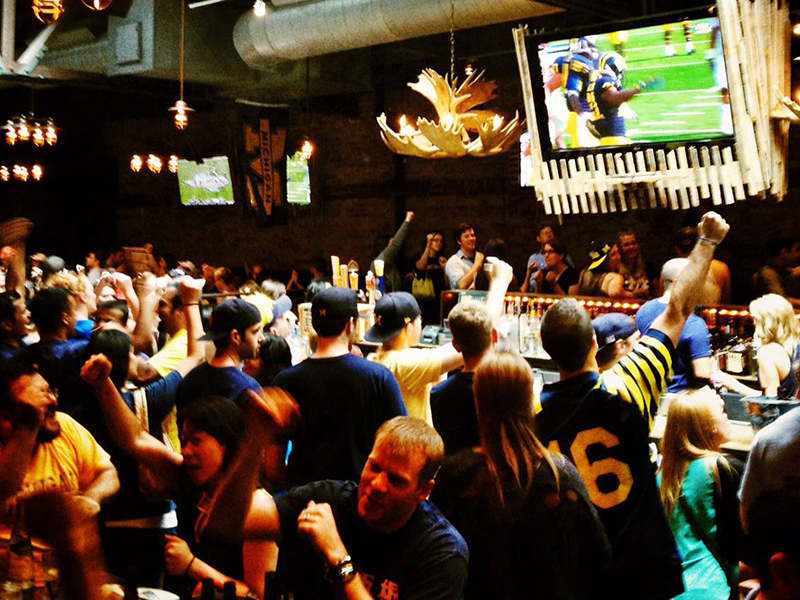The long-running push from sports broadcasters to have Nielsen count out-of-home viewing has achieved some results, but strangely, that may actually lead to those broadcasters making less ratings information available to the public. John Ourand reports at Sports Business Journal that beginning Oct. 3, Nielsen will include out-of-home viewing in overnight numbers, with those numbers released around 1 p.m. Eastern instead of around 8:30 a.m. Eastern and now from 44 markets instead of the current 56. But these changes won’t affect the final national numbers (which will still come out around 4 p.m. Eastern), and as per Ourand, that has some executives trying to get agreement not to release overnight numbers to the public at all:
Rival TV execs have contacted each other to figure out how to deal with the changes. The goal is to get all the networks and leagues to agree to not release overnight ratings this fall. The reason: comparisons to last year will be like comparing apples to oranges given all the changes. Network execs have spent years complaining about the amount of attention given to overnight ratings, which they say have offered an incomplete picture of a sport’s ratings performance. Oftentimes overnight ratings will show a drop from the previous year only to have a final number show an increase — or vice versa.
At first glance, this seems a little curious. Sports network execs have been pushing for recognition of out-of-home numbers for a long time, and the likes of ESPN, Fox and Turner have all had Nielsen measure various out-of-home events for them. And sports seems likely to benefit more than most genres of programming, as sports broadcasts are often watched in bars (like the Michigan bar seen above), restaurants, gyms, and hotels. In fact, a 2017 Nielsen report found sports event broadcasts got the biggest lift from OOH measurements (9 percent across the board) of any studied genre, while ESPN alone saw a 6.2 percent total day lift in 2016 and Fox cited a 40 percent boost (13.6 million viewers) for a 2016 Cowboys-Redskins Thanksgiving game. As Ourand notes, network execs are “enthused” overall about bringing OOH viewing into the regular ratings. So it’s unusual to see that come in and then see the reaction of “we don’t actually want those numbers released.”
But this reaction from the executives seems maybe more understandable when you consider how things are likely to look day-by-day under this new system, with OOH viewing included in overnights but not finals. For one thing, the most common and most logical ratings comparison is to the same event or events the previous year; that’s what produces headlines about rating X being up and rating Y being down. But if fall 2019 sports overnights contain OOH viewing, most of them will be up relative to 2018, which doesn’t necessarily say much about the specific event in question.
The latest
However, it’s often difficult to keep data from getting out, especially when you have multiple big groups with sometimes-competing interests involved. And any agreement to not release overnight ratings means leagues and networks would be missing out on a fair bit of time for positive stories; not having any ratings data out there until 4 p.m. Eastern would mean a big change to the current news cycle of “So many people watched our event last night!”, something that might not be as notable if it’s coming out so late in the day. The counter there is that they won’t have to deal with “good overnights story, bad finals story,” but events that actually draw well will be up in finals too, so there could be some publicity chances missed here. (Of course, if this works as they envision, maybe the people who care about ratings will just shift to caring about the 4 p.m. releases and looking for stories about them at that time.)
This isn’t necessarily the only solution, though, and the example of what happened in Canada may show another approach. Canadian measuring agency BBM (now Numeris) started tracking out-of-home viewing and listening in late 2009 thanks to a switch to portable people meters (the same audio-detecting technology being used for U.S. OOH measurement). And that boosted sports ratings more than anything else, with some estimates figuring there was about a 20 percent gain across the board. But those analyzing ratings caveated stories of ratings boosts by mentioning the systematic change, and it was taken as read that sports broadcasts were going to show some sort of increase. And then in 2010 and beyond, the up/down year-over-year stories were working off a new baseline, largely removing the issue.
And something similar could work in the U.S.; networks putting out overnights and people analyzing them could mention that they include OOH viewing, and that the finals will likely be lower. From the standpoint of the portion of the public interested in ratings, it seems more desirable to have that data out there (even though it’s influenced by a certain factor, that factor is known) then to not have that data. And that might provide some insights into which sports broadcasts see big lifts from OOH viewing (and thus, a big decrease from overnights to no-OOH finals) and which ones see more marginal boosts there. But if this network/league campaign to not put out the overnights is successful, we won’t have that information. We’ll see how this works out, but in any case, this OOH change is going to lead to some interesting ratings discussion this fall.






